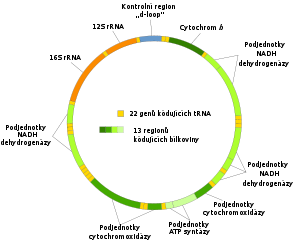
- Image via Wikipedia
On the tenth anniversary of the sequencing of the human genome, what is that remarkable feat’s legacy, and what does it mean for the future?
Things seemed so simple then. It was ten years ago—June 26, 2000—that US President Bill Clinton and UK Prime Minister Tony Blair announced the successful completion of a “draft sequence” of the human genome. The project itself had begun a decade earlier, through $3 billion in government funding from the US Department of Energy and the National Institutes of Health, and a sturdy framework of international collaboration. In 1998, a private initiative led by Dr. J. Craig Venter had entered the human-genome race, using $300 million in funding and a faster, cheaper sequencing method to catch up to the government program. In the end, fueled by a bubble of exuberance, the public and private approaches finished neck-and-neck, producing suitable draft sequences more or less simultaneously.
Expectation and hyperbole ran high: Soon, the raw power of molecular biology would be bent to human will; at a fundamental level, organisms would be as pliable as Silly Putty. Genomics would revolutionize the diagnosis and treatment of disease. Custom-tailored “personalized medicine” would become standard practice. The Book of Life was finally opened, and humanity would grasp its deepest origins and perhaps its ultimate potential.
Pessimists also weighed in, mustering dark visions of societies segregated solely according to genetic predisposition, and a world horrendously damaged by genetically modified organisms run amok.
Though not necessarily overblown, the celebratory and cautionary brouhaha was certainly premature: A “complete” sequence of the human genome would not actually be obtained until 2003. Genetically engineered utopias and dystopias have yet to manifest—the world muddles along as usual between the extremes. Even today, portions of the genome remain terra incognita, though the significance of these unsequenced regions is uncertain. That trace of uncertainty encapsulates the status of genomics today: One of the indisputable scientific contributions of the sequencing and subsequent study of genomes was to reveal just how ill-informed we were ten years ago. (For a more detailed explanation and excellent perspective on the tenth anniversary of the sequencing of the human genome, I must refer you to The Economist’s special coverage, unparalleled in sophistication and breadth within the rest of the popular press.)
The picture that has emerged since 2000 is that the classical understanding of how life’s core cellular machinery functions is rather shallow. Information is indeed encoded in DNA, transmitted by RNA, and transcribed into proteins; a stretch of DNA carrying information that will be expressed as a protein is in fact a “gene.” But this isn’t nearly the whole story.
Related articles by Zemanta
- Human Genome Project leader warns against attempts to patent genes (guardian.co.uk)
- Personalized Medicine in the Genomic Era (scientificamerican.com)
- Brave new world (news.bbc.co.uk)
- Genome at 10: The project few wanted (newscientist.com)








